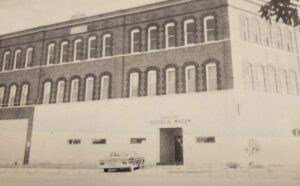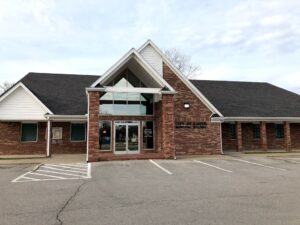Rachel Whitney
Curator, Sapulpa Historical Museum
This week during the last week of March and the first days of April in 1947, Frankoma Pottery had a busy week within and outside their facility in Sapulpa. The company purchased a new kiln and began building six Veteran homes.
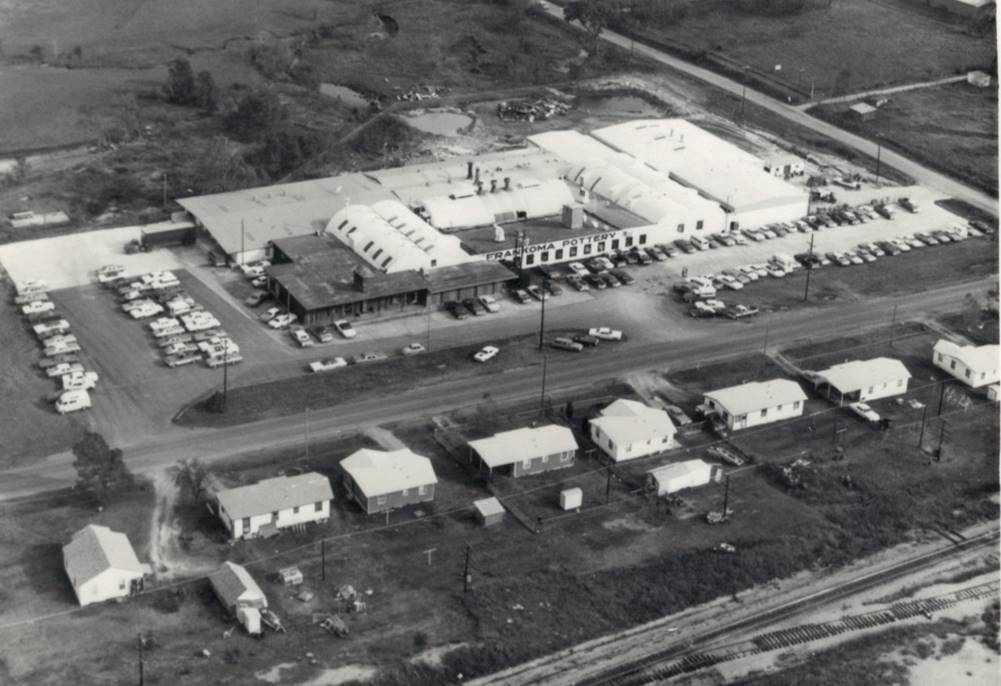
Frankoma began in 1933 by John Frank but was first called Frank Potteries. Frank had been a ceramics professor at the University of Oklahoma, and began the business in Norman. He taught for nearly ten years from 1927 to 1936. He renamed the company in 1934 as Frankoma; he used his last name and the last letters of Oklahoma.
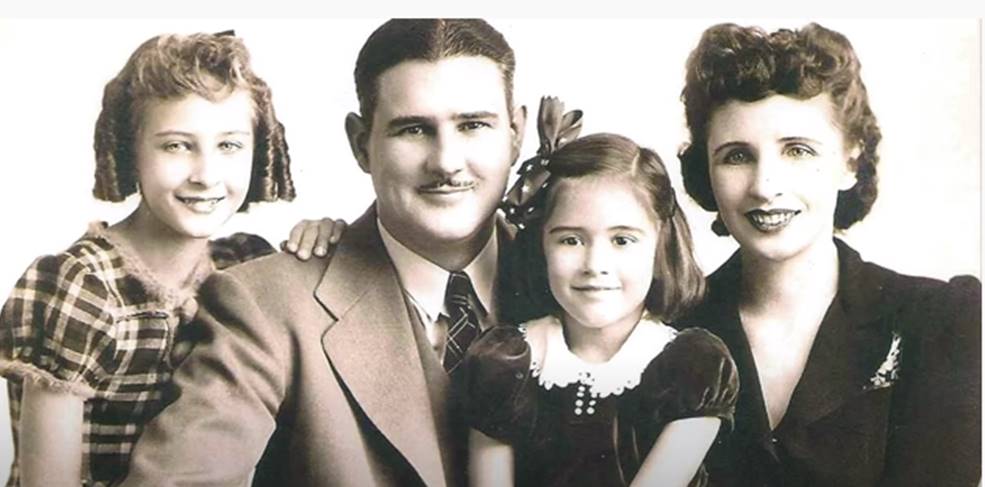
Frank had moved the company in 1938 to Sapulpa. At first Frank began using the clay from Ada, Oklahoma. However, due to the three-day trip, Frank discovered a closer source for his work. In 1954, Frank began using Sugar Loaf Hill found in Sapulpa. The difference in the clay between Ada and Sugar Loaf’s was that Ada had a light tan and the Sapulpa had a red brick color.

In late March 1947, Frankoma Pottery began using their new “tunnel kiln.” It was part of Frankoma’s expansion program. “Addition of the new kiln immediately will double the daily output of the plant to make for a production.” The production at full capacity before the new kiln was 2,000 items per day. By the end of the year, it was estimated that 4,000 items a day would be produced.

More on the expansion plan was to invest in a $28,000* building just south of the plant. It would house “an enlarged mold shop, store room, maintenance room, and experimental laboratory.” Additionally, John Frank had 75 employees to take care of. He purchased showers and lockers to accommodate the Frankoma employees in the expansion program.
*Note: in 1947, $28,000 then would be about $320,000 in today’s value.
The tunnel kiln installed was a 63-foot long kiln. It was the only one of its type in the state. It required 24-hours for the ware to traverse its length. “It is constructed that the intense heat applied to the kiln will be retained in the middle of the tunnel, and distributed over the ware as needed. The kiln accommodates a total of 18 cars, with each car designed to carry 15 cubic feet of ware.”
“The first ware to pass through will be autographed by Frank for his employees.” These were gift pieces chosen by John Frank himself. And because more could be produced, the cost of the products also reduced to “pre-war prices,” Frank had stated. The first one to ignite the new tunnel kiln was by Joneice Frank, daughter of the owner.
“The pottery established on the outskirts of the city now represents an investment of approximately $75,000.*” Business was doing great.
*Note: the $75,000 in 1947 is now around $850,000 in today’s inflation.
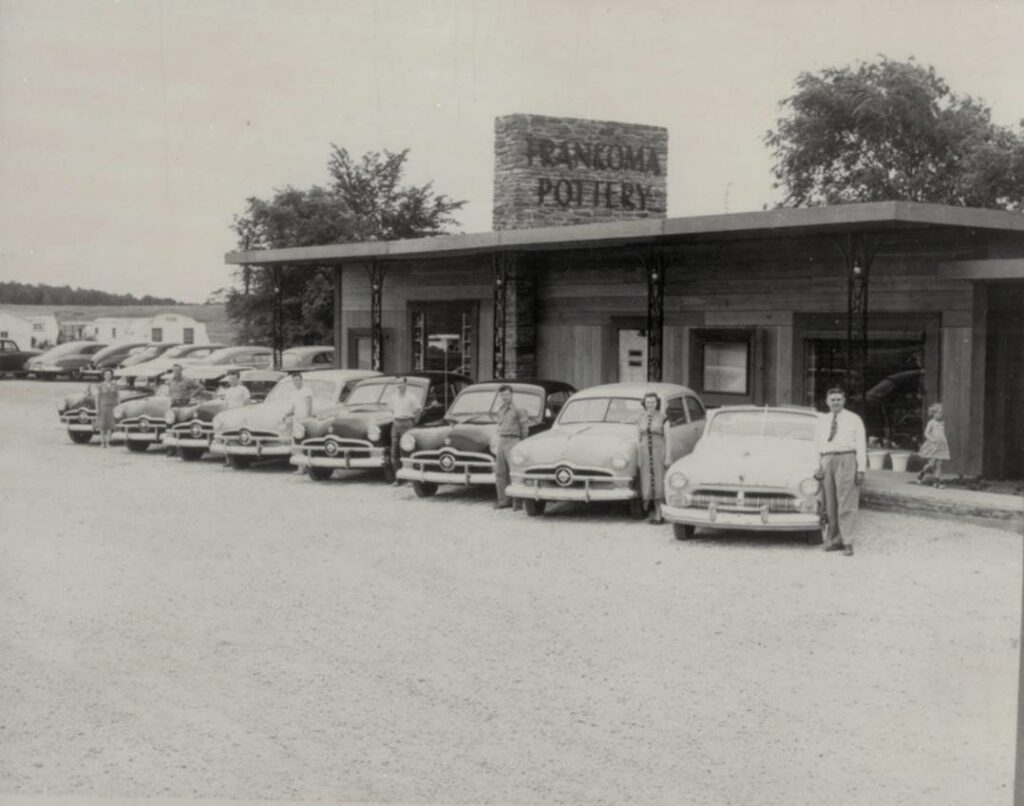
Furthermore, Frankoma Pottery company had a contract for a “group of six Stran-steel Quonset homes of ultra-modern design. The homes, reportedly first of that kind to be erected in the United States are owned by veterans and located on ground adjoining the Frankoma Pottery.”

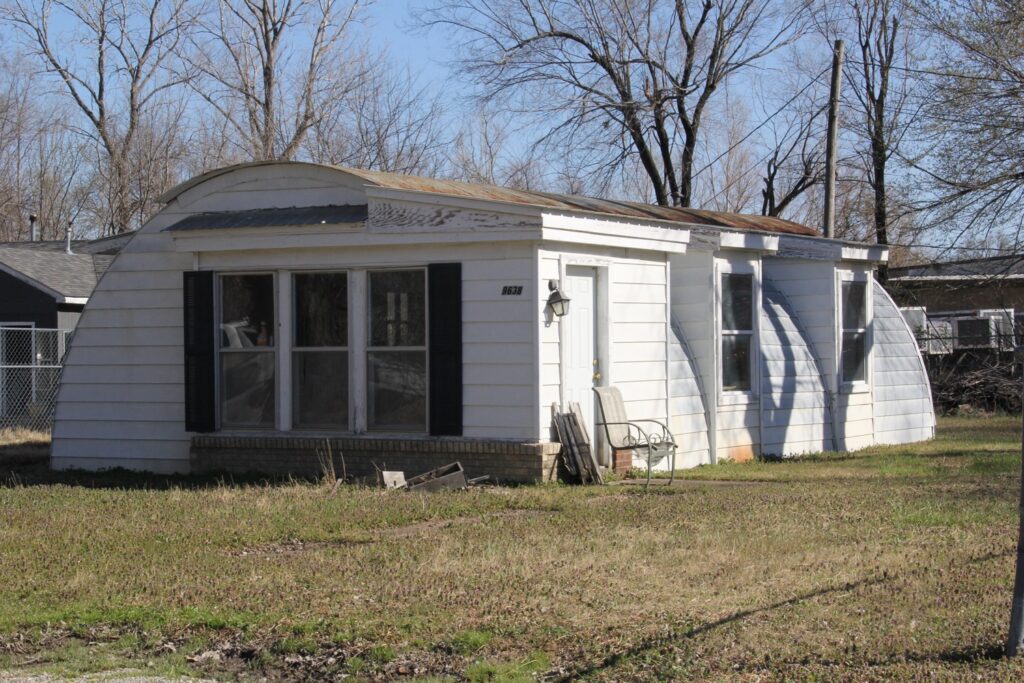
John Frank comments on the project as a way “to help alleviate the housing shortage.” The quonset homes had seven floor plans designed by the company. “The purchasers may select from these designs.”
The contract was to build on the lot for five-room houses included in the 720 square foot “with floors of oak hardwood, sheetrock or plaster walls.” It was “completely modern with kitchen built-ins, and circulating heating systems represented an individual investment of $4,642 on homes valued at $5,100.*”
*Note: with inflation, the $5,100 is roughly $57,600 today.
The homes also were fire-proof with “rock wool insulation and a vapor ceiling of copper.” Additionally, water was furnished by the Frankoma Pottery company water system. “Septic tank laterals designed to completely cover backgrounds to provide sub-irrigated soil.”

Frankoma’s contract included that the homes were being “financed by a 25-year FHA plan through Sapulpa Federal Building and Loan Company. Reportedly the payments including taxes, interest, insurance will be an approximate sum of $35 per month.*”
*Note: the $35 a month in 1947 would be about $400 today.
The housing addition was further expanded in 1950.
The business kept expanding until John Frank passed away in 1973. The business had a few downfalls and returns over the next few decades. His wife Grace Lee Frank passed away in 2019. The youngest daughter, Joniece Frank passed away in 2015. Her sister, Donna Frank, wrote a book about their parents called Clay in the Master’s Hands in 1977. Donna Frank passed away in 2020.




